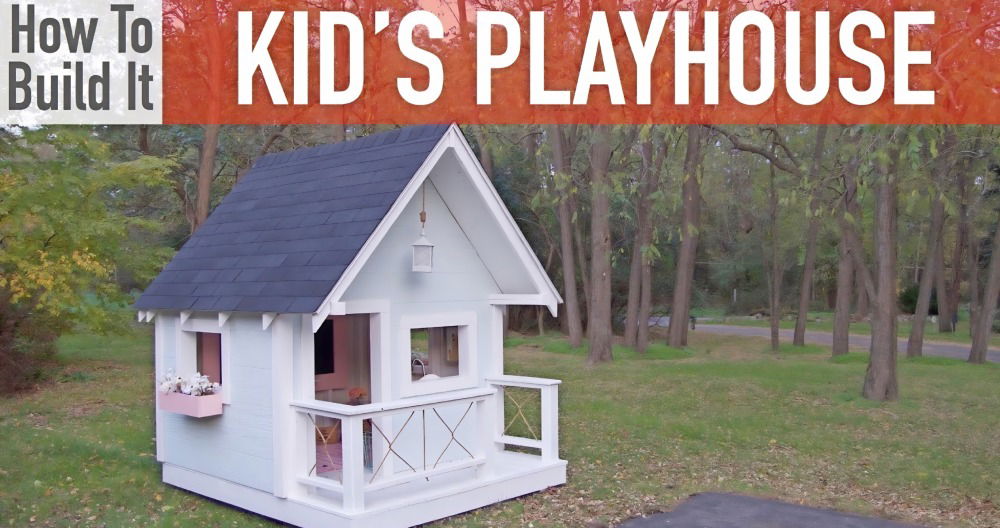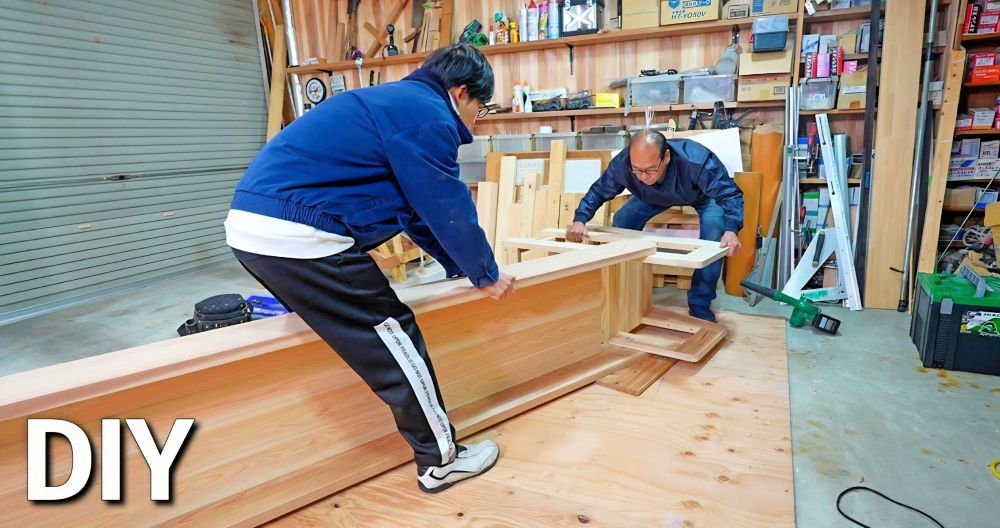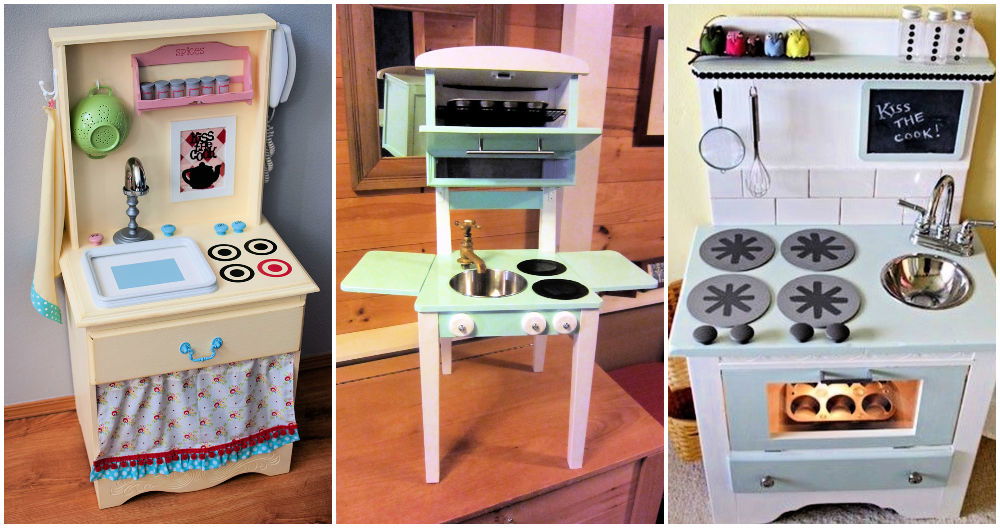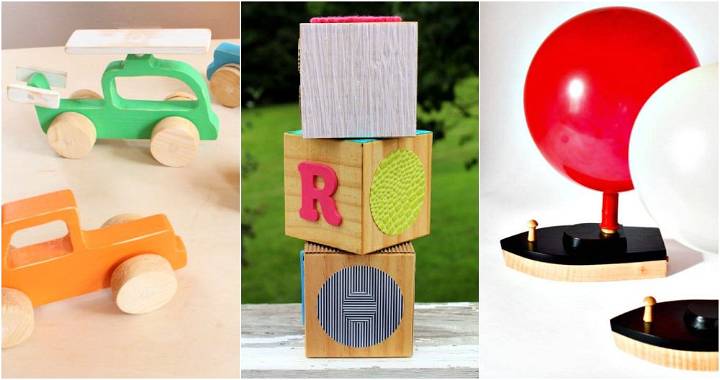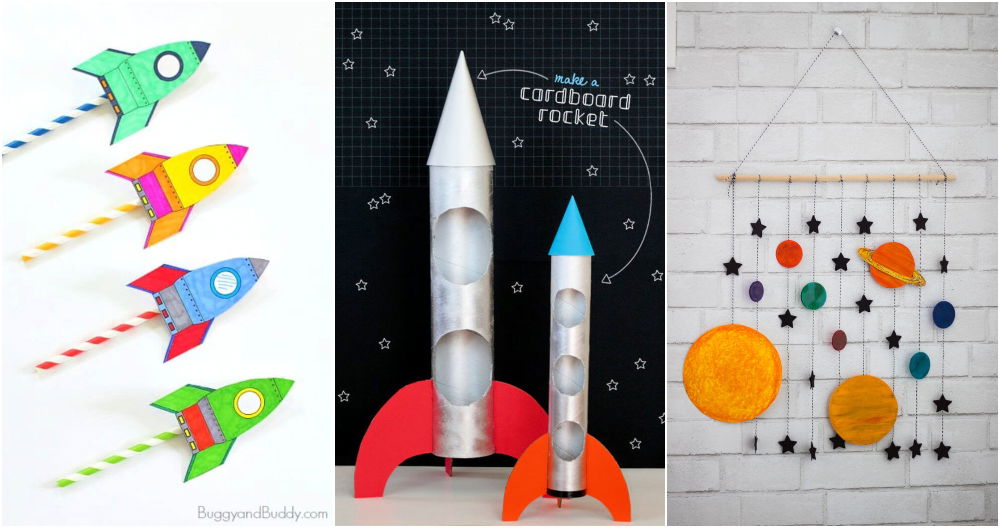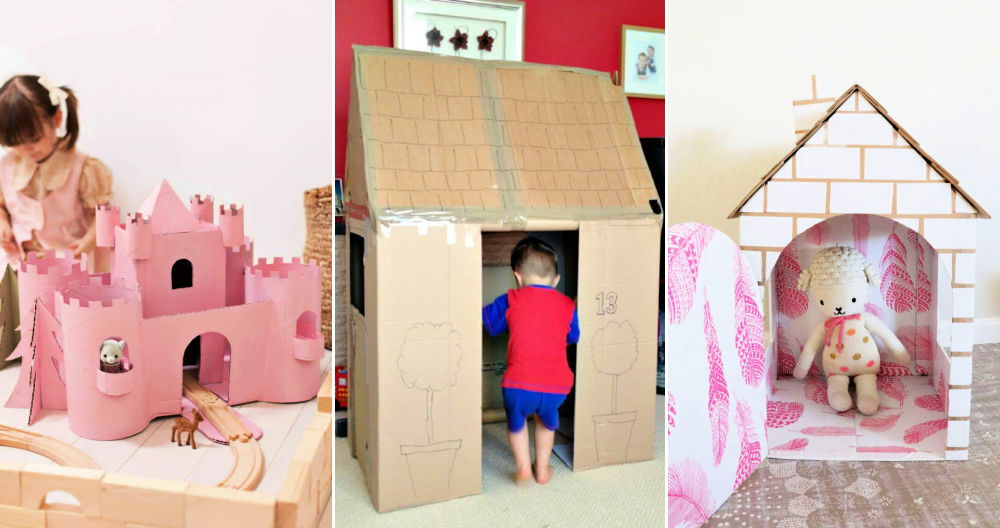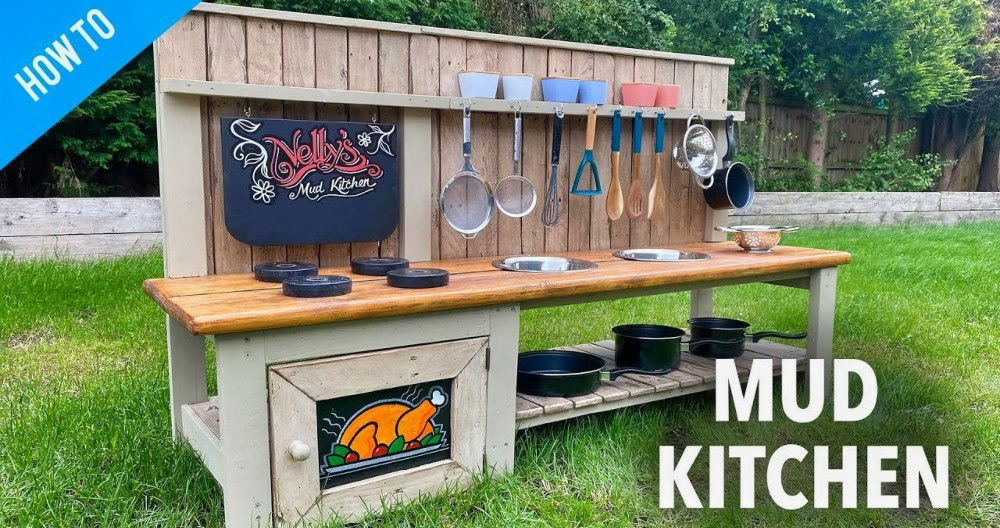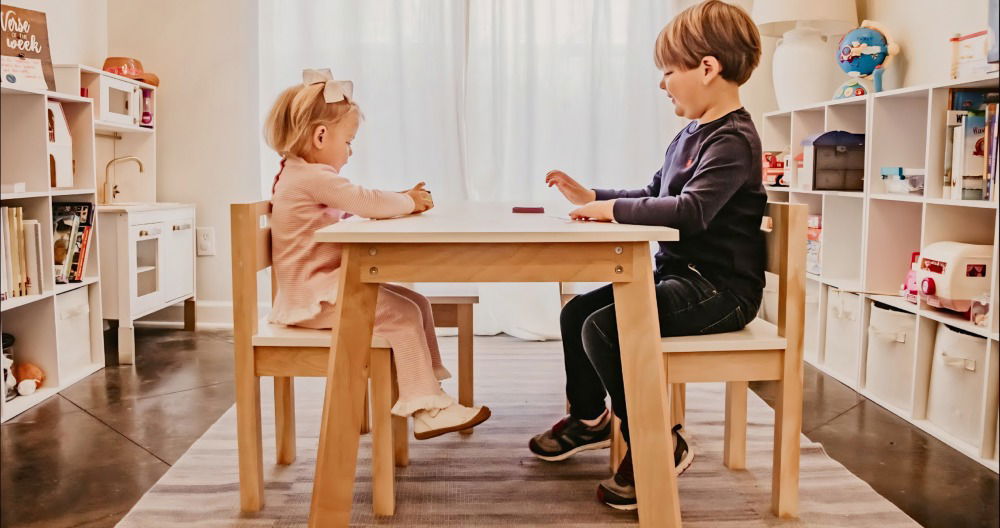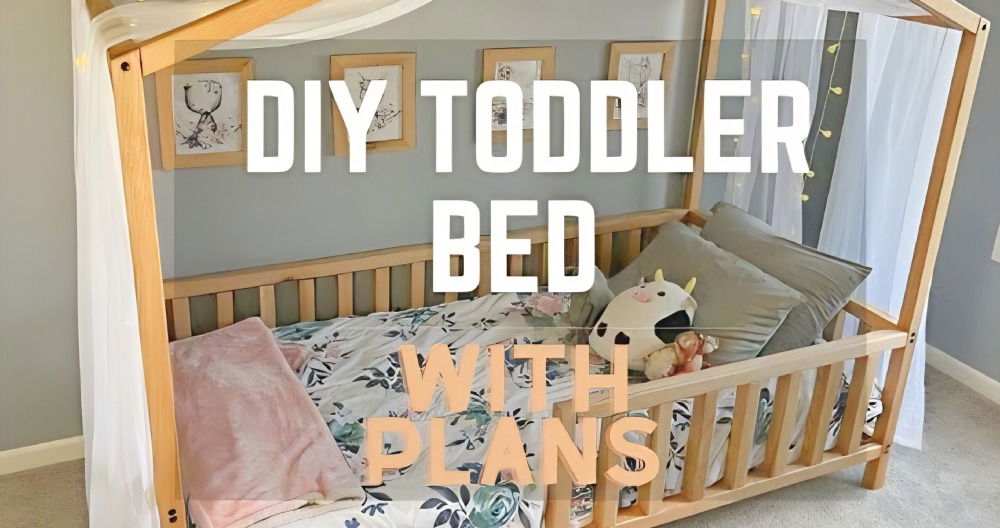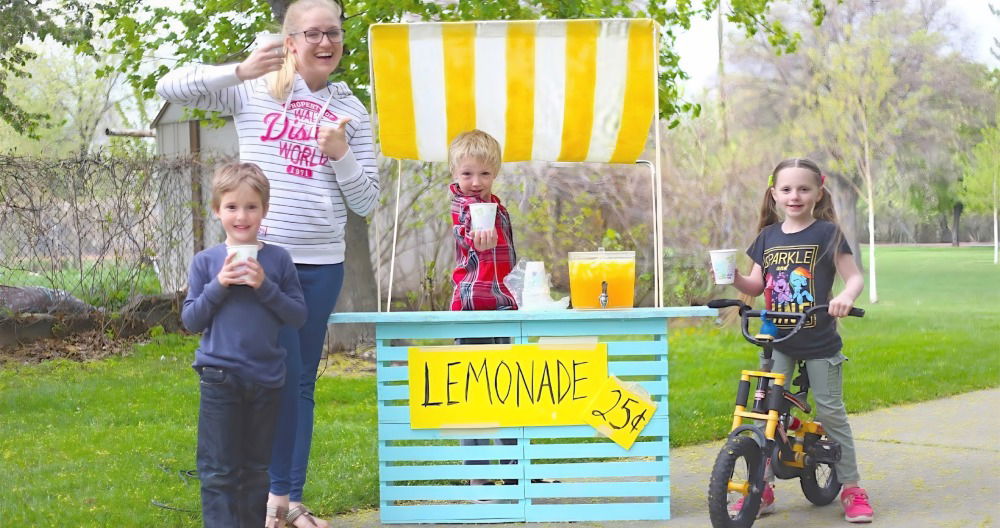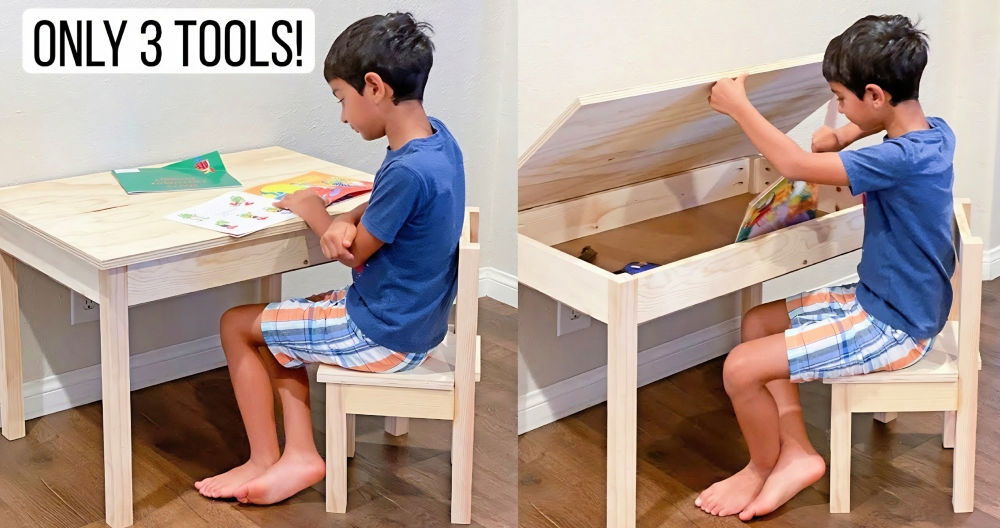Building a DIY treehouse for my kids was one of the best projects I ever took on. I remember the excitement in their eyes when we first discussed it. We spent weekends gathering materials and sketching out tree house plans. It was hard work but worth every minute when I saw their faces light up. Sharing this guide, I'm helping you build magic memories too.
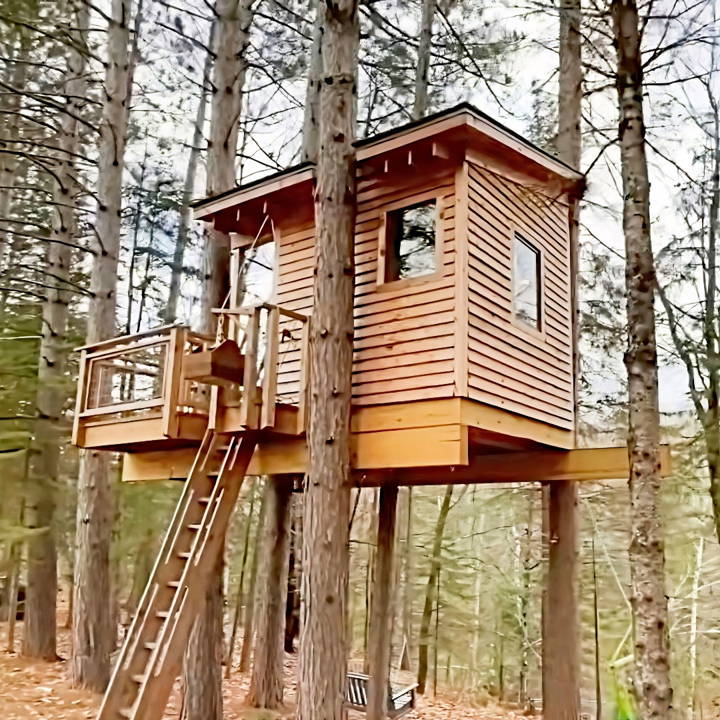
Making a DIY tree house isn't complicated. With basic tools and some patience, your dream can come true. Start with a sturdy tree and secure foundations. Safety is crucial, so double-check all connections. Trust me, following these steps can make the experience enjoyable and hassle-free, ensuring your kids have the perfect play spot.
Understanding Treehouse Foundations
Building a treehouse starts with a strong foundation, which is not just about the materials you use but also the tree you choose. Here's how to lay the groundwork for a treehouse that will last for years to come.
- Choosing the Right Tree The best tree for a treehouse is healthy, mature, and has a strong trunk and branches. Look for trees like oaks or maples that are known for their strength. Avoid trees that are diseased or have visible damage. It's always a good idea to consult an arborist if you're unsure.
- Assessing Tree Health A healthy tree is vital for a safe treehouse. Check for signs of disease, such as fungus or dead branches. The tree should have deep roots and a sturdy trunk. If the tree's health is questionable, it's better to choose another.
- Sustainable Building Practices When building your treehouse, be mindful of the tree's wellbeing. Use methods that minimize damage, like floating brackets or platforms that allow for tree growth and movement. Avoid nailing directly into the tree, as this can cause harm and increase the risk of disease.
- Planning for Growth Trees continue to grow, so your treehouse should accommodate that growth. Design your foundation to be adjustable or use materials that can be easily modified as the tree expands.
- Safety First: Ensure the foundation is secure before building upwards. Test the strength of your platform and make any necessary adjustments. Safety should always be your top priority.
Following these guidelines ensures a safe, sustainable, and nature-friendly treehouse. Planning and building a solid foundation offers a long-term, enjoyable retreat in the trees for all.
Materials We Needed and Why
- Treehouse Attachment Bolts (TABs): To secure the structure without harming the trees.
- Lumber for Structural Beams and Floor Joists: The skeleton of our build, providing strength and support.
- Plywood and Cedar Shiplap: For flooring and walls, chosen for their durability and aesthetic appeal.
- Salvage Windows: To integrate natural light and beauty, focusing on reusability.
- Boat Winches: For hoisting materials without powered equipment, a nod to manual ingenuity.
Step by Step Instructions
Learn how to build a treehouse with our step-by-step instructions, from design to interior finishes, and embrace your DIY adventure.
The Design Philosophy
Our design revolved around simplicity and sustainability. Following local zoning laws, we capped our indoor space at 75 square feet to skip the bureaucratic hurdles of permits. The treehouse's dimensions were also influenced by the dimensions of salvage windows we found, adding a layer of eco-friendliness to our project. With a cardboard scale model ready, we approached the building with a mix of excitement and apprehension.
Laying the Foundations: A Test of Patience and Strength
The most physically demanding part was erecting the structural beams, a process that tested our resolve and physical stamina. Securing the beams with TABs and leveling them with a water level was a primitive yet effective way to ensure accuracy. It was a labor of love, with family members chipping in, uplifting our spirits when the going got tough.
The Art of Building Upwards
With the beams in place, we moved onto the floor joists and plywood flooring, our makeshift base. Erecting the wall panels we'd prefabricated back home was both a challenge and a thrill, akin to seeing our dreams materialize before our eyes. The use of the Zip system sheathing on walls, which is a first for us, promised durability with less hassle.
Embracing the Elements: The Exterior Takes Shape
The exterior siding, made primarily of cedar, required meticulous attention to detail. Matching the rustic charm of northern Minnesota, the cedar shingles for the roof were equally about aesthetics as they were about withstanding the elements. The choice of thermally modified wood for the deck and bar top seating area was born out of a desire to have materials that could endure the harsh winters while maintaining their beauty.
Interior Dreams and Finishing Touches
Crafting the interior was where our personal touches truly came to life. From installing custom-made wood art crafted from cedar scraps to assembling the loft net, every choice reflected our family's identity. The bean bag below the Loft net became a cozy nook for our children, promising countless hours of joy and relaxation.
Over 50 days across two summers, our treehouse became a sanctuary. We learned patience, the strength of family, and the joy of making something meaningful by hand.
Tree Growth and Adaptation
When you build a treehouse, it's essential to plan for the tree's future growth and movement. Trees are living organisms that continue to grow and change over time. Here's how to ensure your treehouse can adapt and remain safe as the tree matures.
- Allowing for Movement. Trees sway in the wind and grow in girth and height. Use flexible materials and joints that give the treehouse the ability to move without causing damage. This can prevent structural stress and potential breakage.
- Adjustable Supports As the tree grows, the supports holding up your treehouse will need to adjust. Design your supports with the ability to be tightened or loosened. This way, you can accommodate the tree's increasing size.
- Protecting the Tree Avoid harming the tree by not using invasive fasteners like nails or screws that can damage the tree and introduce disease. Instead, opt for tree-friendly attachment methods like suspension systems or special treehouse bolts.
- Regular Inspections Check your treehouse and the tree regularly for any signs of stress or damage. Look for cracks in the wood, weak branches, or any other changes. Keeping an eye on these details can help you make repairs before any serious issues arise.
- Consulting Experts If you're ever unsure about the tree's health or the safety of your treehouse, don't hesitate to consult an arborist or a professional treehouse builder. They can provide valuable advice and help ensure your treehouse remains a safe place for everyone.
By considering these points, you'll build a treehouse that lasts, ensuring enjoyment and safety for years.
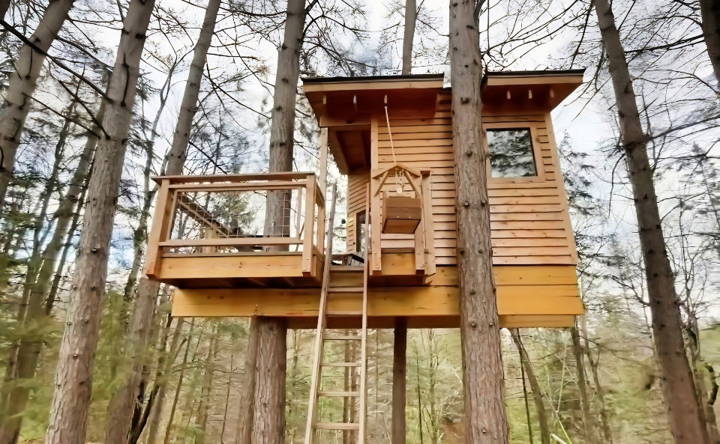
Technology Integration
Incorporating technology into your treehouse can enhance its functionality and sustainability. Here's how to do it in a way that's both practical and environmentally friendly.
- Solar Power Harnessing the sun's energy is a great way to power lights or charge devices in your treehouse. Install solar panels on the roof or in a clear area nearby. Use batteries to store energy for use at night or on cloudy days.
- Rainwater Collection: Set up a system to collect rainwater from your treehouse roof. You can use this water for gardening or even as a backup water supply. Make sure to include a filtration system if you plan to use it for drinking.
- Smart Lighting LED lights are energy-efficient and can last for years. Consider smart bulbs that you can control with a smartphone or timer. This way, you can ensure lights are only on when needed, saving energy.
- Weather Station A personal weather station can be both educational and practical. It can teach you about the local climate and help you plan for maintenance or activities based on the weather forecast.
- Wi-Fi and Connectivity: If you want to stay connected, consider installing a Wi-Fi extender to reach your treehouse. This can be useful for both work and play.
Integrating these technologies makes your treehouse fun, smart, and eco-friendly. Keep the tech simple and user-friendly for everyone to benefit.
Legal Considerations and Permissions
Before you start building your dream treehouse, it's important to understand the legal side of things. Here's a straightforward guide to help you navigate the permissions and regulations:
- Check Local Laws Every area has its own rules about building structures like treehouses. In many places, treehouses are considered ‘temporary structures' and have certain height limits, usually around 4 meters. You'll also need to keep your treehouse a certain distance from property lines—often about 3 meters.
- Tree Preservation Orders Some trees are protected by law. If the tree you're eyeing for your treehouse is on a protected list, you won't be able to build in it at all. Always check with local authorities first.
- Building Permits For a basic treehouse, you might not need a permit. But if you plan to include utilities or make it a livable space, the rules change. You'll likely need the same permits required to build a house.
- Zoning Restrictions: Your treehouse can't cover more than half of your garden, and if it's near a conservation area or listed building, you'll need special permission. If you're thinking of using the treehouse for business, like a glamping site, that's another scenario where you'd need approval.
- Talk to Your Neighbours It's a good idea to chat with your neighbors before you build. They might have concerns about privacy or the look of your treehouse. Getting their input can prevent complaints later on.
- Utilities and Habitation If you want to live in your treehouse or have permanent power and water, you'll need to follow more stringent regulations. Temporary solutions like extension cables for electricity might be a way around this.
To avoid fines or removals, understand legal aspects and research before building your treehouse.
Maintenance and Upkeep
Taking care of your treehouse is just as important as building it. Regular maintenance ensures that your treehouse remains a safe and enjoyable place for years. Here's a simple guide to keeping your treehouse in top shape.
- Inspect Regularly At least once a year, check your treehouse for any signs of wear or damage. Look for loose bolts, rotting wood, or cracks. After storms, do an extra check, especially for any damage to the supports or the tree itself.
- Wood Protection Wood is the heart of your treehouse, and it needs protection from moisture and insects. Use a good quality wood sealant to keep moisture out. If you notice any signs of insects, like termites, treat the wood immediately to prevent further damage.
- Tree Care: The tree is the foundation of your treehouse. Keep an eye on its health. If you see dead branches or signs of disease, call an arborist. Make sure the tree has enough room to grow without stressing the treehouse structure.
- Cleaning: Keep your treehouse clean of debris and leaves, which can trap moisture and lead to wood rot. A soft brush and warm, soapy water are usually enough for cleaning. Avoid harsh chemicals that can damage the wood.
- Adjustments for Growth As the tree grows, your treehouse will need adjustments. Make sure your design allows for easy tightening or loosening of supports. This flexibility helps accommodate the tree's growth and prevents damage.
- Storm Preparations If you live in an area with heavy storms, make sure your treehouse can withstand them. Check for any weak points and reinforce them if necessary. Consider installing shutters or tarps to protect against wind and rain.
By following these simple steps, you can enjoy your treehouse without worry. Regular upkeep not only keeps it safe but also extends its life, making all your hard work building it worthwhile.
FAQs About Building a Treehouse
Explore the faqs about building a treehouse! Get expert tips, safety guidelines, and essential info for your perfect backyard project.
Do your research and check your local laws and regulations to ensure treehouses are allowed in your area. Consult with professional treehouse builders about local standards. Obtain permission from the property owner, and if there are multiple owners, make sure all approve your plans. Select a healthy and strong tree suitable for construction.
Take safety seriously by wearing protective gear like helmets and goggles when using tools. Ensure you have proper insurance coverage for the project. Use materials that won’t harm the tree, such as nails or screws instead of ropes or wires, and avoid attaching anything directly to the tree that could damage it.
Don't attach the treehouse directly to the tree, as it can cause damage and instability. Be mindful of the treehouse's weight—it must support itself and the occupants. Avoid using too many fasteners close together, which can harm the tree, and ensure the platform is adequately stabilized to prevent wear and danger over time.
Place your treehouse away from electrical wires and power lines. Never build on top of them. Consult a professional when working with power tools or electricity to ensure safety and compliance with regulations.
Choose sustainable materials such as reclaimed wood or eco-friendly alternatives. Consider the impact of your treehouse on the surrounding ecosystem and aim to minimize it. Use non-toxic paints and stains to protect both the tree and wildlife. Additionally, think about how you can incorporate natural light and ventilation to reduce the need for artificial lighting and heating.
Conclusion:
In conclusion, with these steps, you're well on your way to building a safe and fun DIY treehouse for your kids. Enjoy the fun process and the joy it brings to your family.



